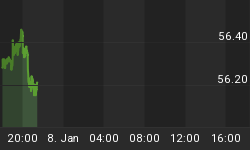Stock Traders' Almanac reports that there have been six previous presidents that served a seventh year in office and that the average return for the Dow in those years averaged 13.00% with 1939 as the only year that ended in the red. A seventh year, of course, is also a pre-election year which is expected to be very bullish.
But markets don't stop just because the calendar year comes to an end. The Wilson peak in November 1919 started a decline which didn't end until Aug 1921 and produced a massive loss of 47%.
Roosevelt's seventh year peaked in September 1939 (after a big dip which recovered to almost exactly where it began the year) and didn't stop falling until April 1942 producing a loss of 40%.
1959 was the seventh year of Eisenhower's time in the oval office. The Dow didn't peak until January 5, 1960 and bottomed that Oct with a loss of "only" 17%.
The next seventh year of a presidential term didn't occur until Reagan in 1987. That's year's decline was sharp and swift lasting only from August to October but still wiping out 36% of the Dow.
1999 was the seventh year of the Clinton administration. "Friends of Bill" will say the Dow topped in Aug and bottomed in Oct producing a loss of only 11%. Others will point to the Eisenhower peak in Jan of the following year and insist the Clinton period be examined in a like manner. In that case, like Eisenhower, the Dow topped in Jan and didn't stop declining until Oct 2002 producing a 38% loss.
2007 was the seventh year for G.W. Bush. The Dow peaked in October and fell 54% before finding a bottom in March 2009.
2015 is the seventh year for Obama. Whether it begins this year, or waits until after the first of next year, it would seem that a big decline is coming.
Take a sneak-peek at Seattle Technical Advisors.com
















